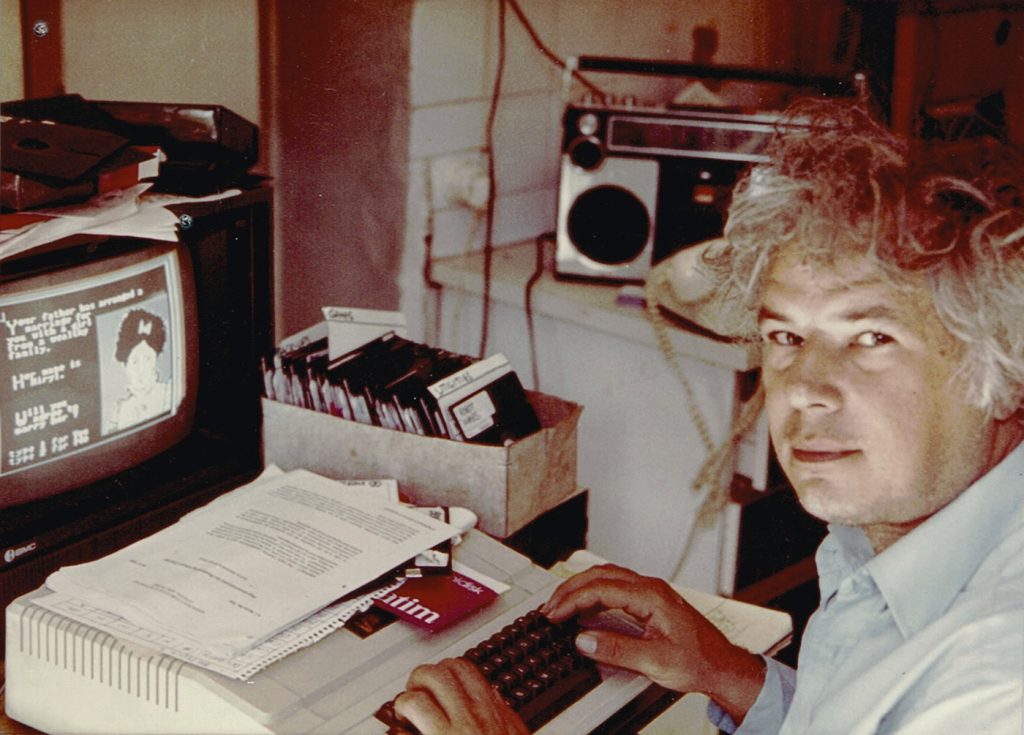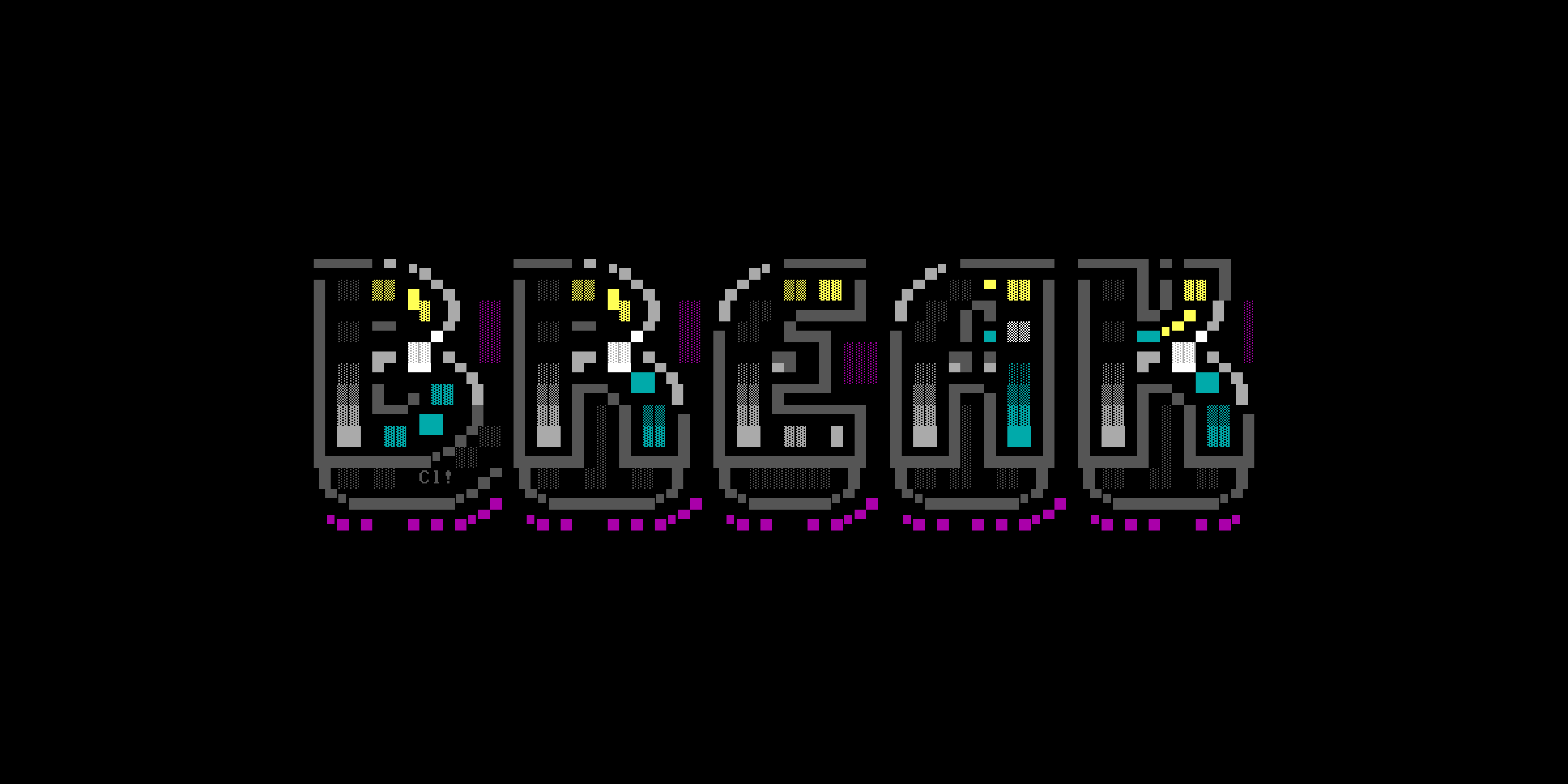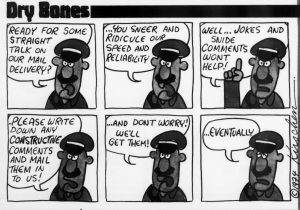
It’s time to bring some dry bones back to life.
In coming days, I will publish a curated collection of lost software developed by the Israeli cartoonist Yaakov Kirschen together with programmers from Gesher Educational Affiliates as well as from his own studio, LKP Ltd.
The collection includes 12 games, demos, and experiments in artificial personality and artificial creativity. The software was developed between 1983 and 1989 for various platforms including the Apple II, Atari ST, Commodore Amiga, and IBM PC. [Update: Two more pieces were added in January 2024, bringing the total to 12]
Kirschen is best known as the artist who created the cartoon “Dry Bones,” a satirical take on the absurdities of life in Israel. It became a popular daily feature in the Jerusalem Post and in Jewish newspapers across the diaspora, and has been Kirschen’s great life work for 50 years.
The Apple II and IBM PC software was imaged by Keith Hacke from 5.25″ disks sent to Josh Renaud by Sali Ariel, Kirschen’s wife. The Atari ST software was imaged by Kevin Ng and Josh Renaud from 3.5″ disks they each owned. The Commodore Amiga software was imaged by Josh Renaud from 3.5″ disks sent by Sali Ariel, using hardware loaned by Dan Hevey and Scott Duensing.
Do you enjoy my retrocomputing stories on Break Into Chat? Please join my email list and stay in touch. 📬
New life
In the early 1980s, Kirschen embarked on a second career as a software developer for home computers. He used the connections and clout he had built through the success of “Dry Bones” to establish a small software studio in Israel, helped along by tech titans like Jack Tramiel of Atari and Irving Gould of Commodore.

“Dry Bones” is a reference to Ezekiel 37 in the Bible, which describes a vision of God raising a living army from a valley full of dry, bleached bones.
It was a graphic prophecy of the restoration of the Jewish nation, a prophecy that many Jews and Christians, including Kirschen, believed was fulfilled when the State of Israel was created in 1948.
Over the years that I’ve been researching Kirschen’s work, I’ve come to think of old floppy disks in the same terms. They really are like dry bones in the desert: lost, forgotten programs just waiting for someone to come along and bring them back to life.
The programs
Though old — ancient, even — these programs have things to teach us today.
Here are the programs I will be sharing:
1. Gesher’s Apple II games
The following four Jewish educational programs for the Apple II were developed by Gesher Educational Affiliates and Kirschen:
- “Aleph Baiters” (1983)
- Action game loosely based on Space Invaders. Teaches the Hebrew alphabet.
- “Nosh Kosh” (1983)
- Action game based on Pac-Man. Teaches kashrut, Jewish dietary law.
- “Borders” (1983)
- Action game loosely based on Donkey Kong. Teaches Jewish history.
- “The Georgia Variations” (1984)
- Choose-your-own-adventure game in which players take the role of a boy in late-1800s eastern Europe who emigrated to America.
Full blog post: Unearthed: Kirschen’s Apple II games for Gesher
2. Kirschen’s independent Apple II games and demos
- “You and Doc Possum” (1984, 1985)
- Educational game about the animal kingdom. Intended to be distributed by The Learning Company.
- Demo (June 3, 1984)
- A demo consisting of “work-in-progress and random thoughts” through which Kirschen talks about the need for software to surprise and excite.
- “Dress Master” and “Stripper” (undated)
- Two different pieces of software built from the same core mechanic of adding or removing clothes from a female model.
Full blog post: Unearthed: Kirschen’s independent Apple II projects
3. Kirschen’s Atari ST programs
These “artificial personality” entertainment programs began as demos of the interface of a larger “computer greeting card” project. ANTIC Publishing convinced Kirschen to sell them as standalone software. These programs were sold under the name of Kirschen’s American firm, Just For You, Inc. “Murray” and “Mom” were among the earliest third-party titles for the Atari ST, and were profiled in depth by several large newspapers, including the New York Times. (The larger project failed and the greeting card software does not survive)
- “Murray and Me” (1985-86)
- “Mom and Me” (1985-86)
Full blog post: Unearthed: Kirschen’s Atari ST projects
4. Kirchen’s Commodore Amiga music software
Perhaps Kirschen’s most ambitious idea was to make software that could generate music autonomously using “artificial creativity.” Early versions of the project, called “Magic Harp”, were developed for the Amiga 1000, using digital sound samples. The Amiga software was never published commercially, but was profiled in several large newspapers in 1988 under the name “JFY Box” or “Jiffy Box” after it was used to score a BBC TV documentary.
- “Computer Composer” demo (1986)
- “Magic Harp” baroque (1986-87)
Full blog post: Unearthed: Kirschen’s “Magic Harp” for Commodore Amiga
NOTE: These two pieces of Amiga software were recovered one year after this series was originally published. The combined history of both the Amiga and PC software was originally given in “The Music Creator” blog post below (No. 5).
5. Kirchen’s IBM PC music software
A MIDI-based version of Kirschen’s autonomous music composing system was later ported to the IBM PC under the name “The Music Creator.” This version was sold commercially in 1989.
- “The Music Creator” (1989)
Full blog post: Unearthed: Kirschen’s “Music Creator” for IBM PC


Share your thoughts!